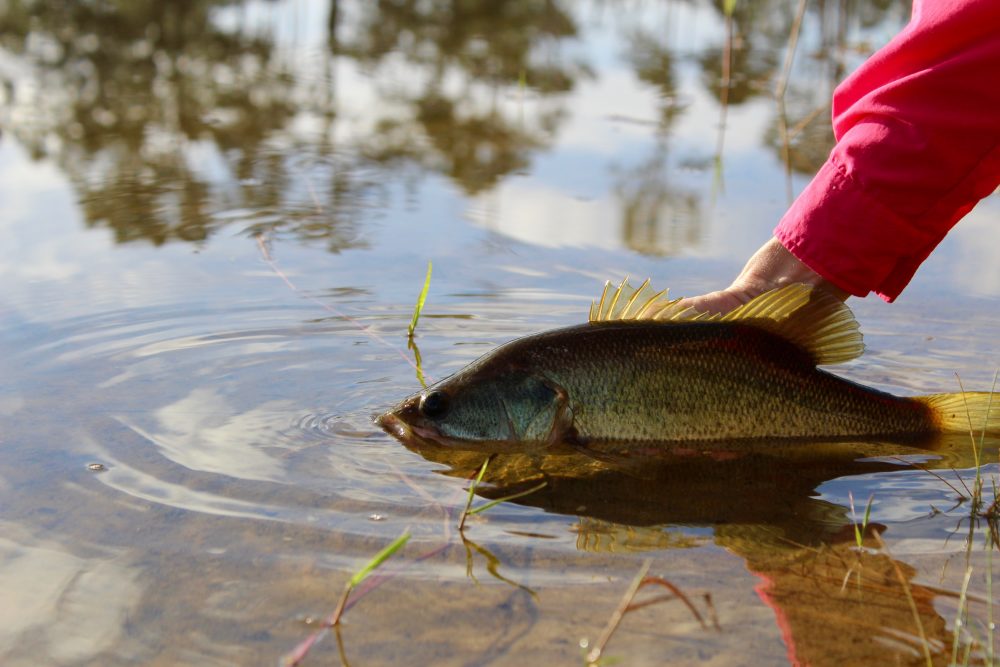Fishing resources and tips for the empowered female angler.
14 Catch and Release Tips for Healthier Fisheries
March 28, 2014

Whether you are a beginning angler or have been fishing for years, it’s important to understand that proper catch and release fishing practices are a key part of conserving our nation’s fisheries. There will be times when you catch fish that aren’t within your state’s fishing regulations, or when you simply just want to fish for sport and have no desire to keep your catch. In these situations, follow conservation-minded steps to ensure a high survival rate for all of the fish that you release.
Catch and Release Guidelines to Follow
- Make sure that you can properly identify the fish species in your state. Most all states can provide fish identification posters, charts, or have online identification guides.
- Use tackle heavy enough to land fish quickly so that they don’t get overly exhausted or stressed.
- Use non-offset (in-line) circle hooks when fishing with live or natural baits since this greatly decreases the chances of a fish becoming gut hooked.
- Release your catch without removing it from the water whenever possible. If you do remove the fish from the water for a photo, don’t keep the fish out of the water for any longer than you can hold your own breath. Keep in mind that the most ethical anglers often take photos of their catches in the water.
- Use wet hands when handling the fish to prevent the removal of the fish’s protective slime coating.
- Revive tired fish before releasing by holding them horizontally in the water facing into the current. If there is no current, you can gently move them forward with an open mouth so that water can flow over the gills. Continue to revive the fish until it can swim away under its own power.
- Release the fish as quickly as possible after it has recovered.
- Avoid removing large fish from the water. If the fish must be lifted from the water, hold the fish horizontally and be sure to support the weight of the fish to prevent injury.
- Do not put fingers or other objects into the eyes or gills of the fish.
- Use a de-hooking device to release fish with minimal handing.
- If the fish is hooked deeply, cut the line as close to the eye of the hook as possible.
- If you need to use a net, use a rubberized or knotless landing net in order to preserve the fish’s slime coat.
- Crimp down the barbs on your hooks so that removal of the hook is quick and easy.
- If you are deep sea fishing and your catch appears to display evidence of barotrauma, practice recompression or rapidly returning the fish to the depth it was caught. There are a variety of tools on the market, including descender devices and release weights, that can assist you with this process.
By practicing these conservation-minded catch and release techniques, you are helping to protect our fish populations for the future. Have a great catch and release photo you can share? Head over to the Shefishes2 Facebook page and share it there.